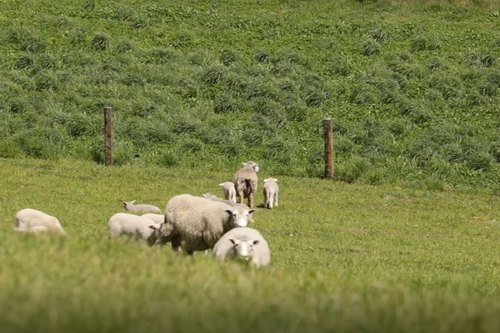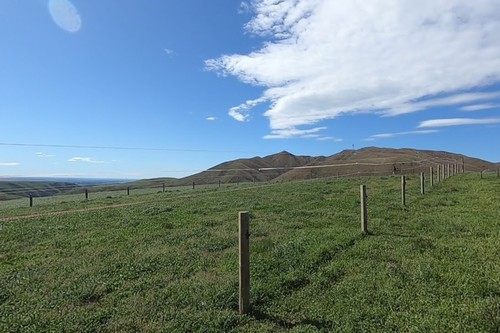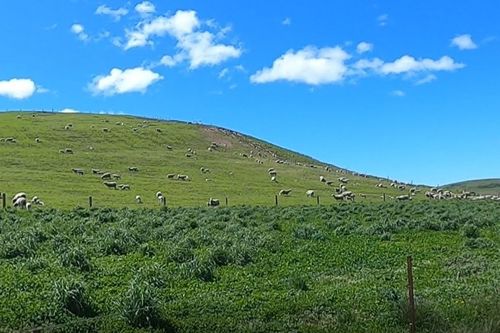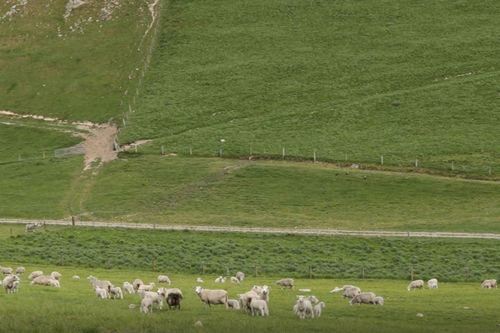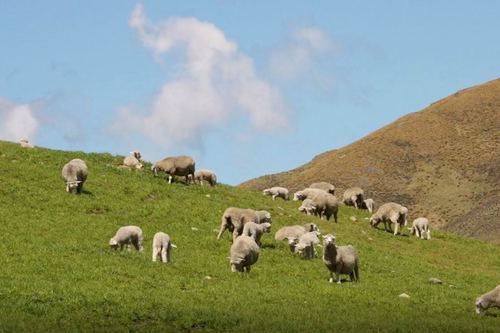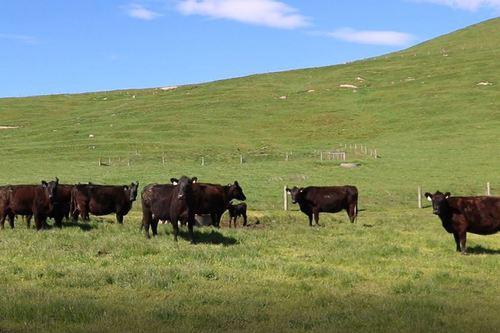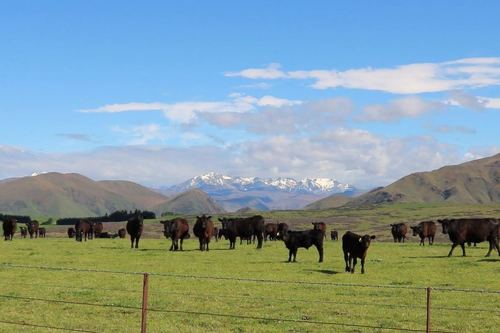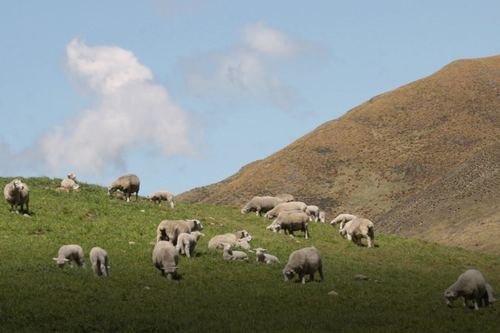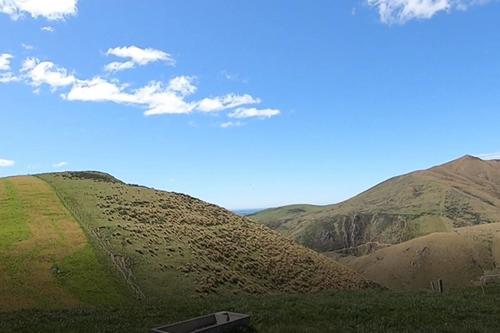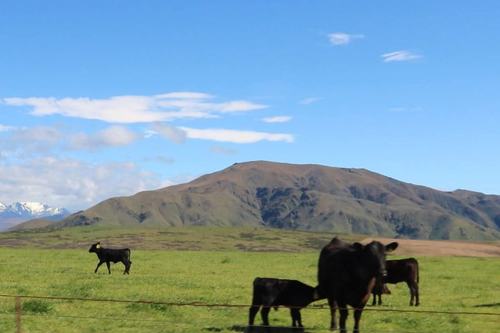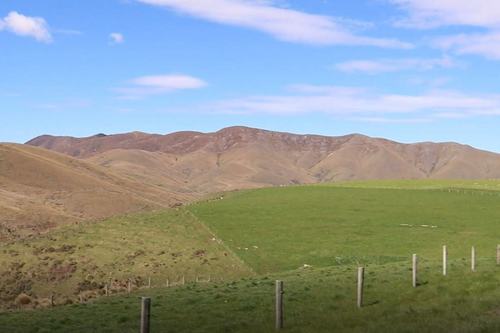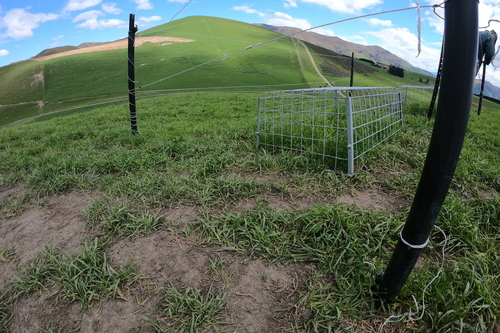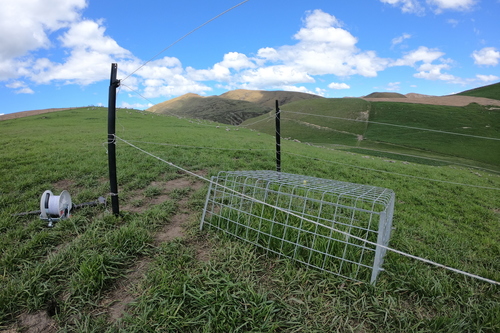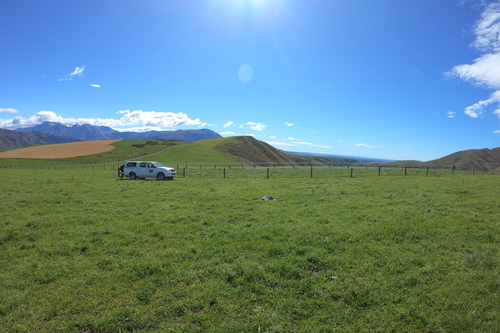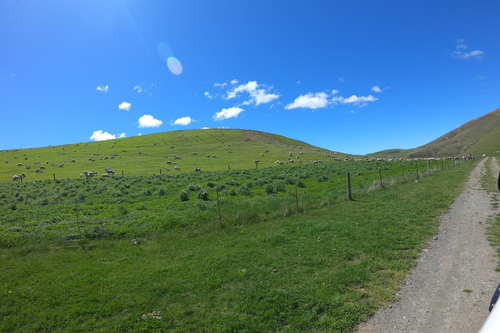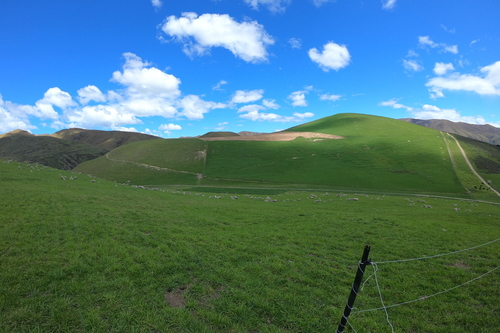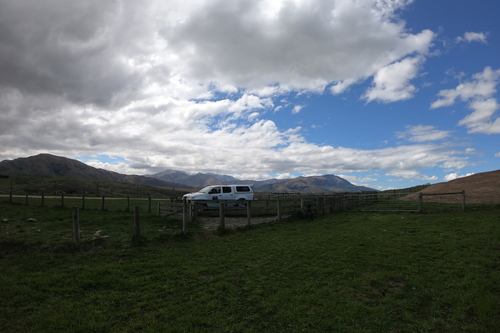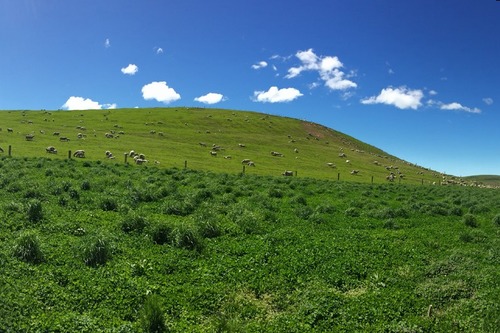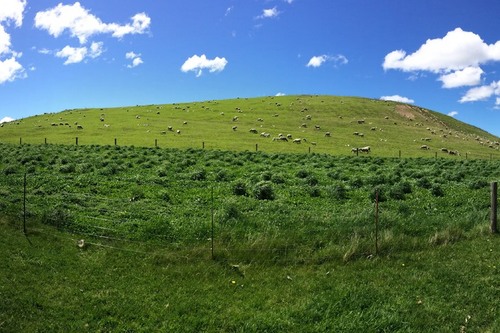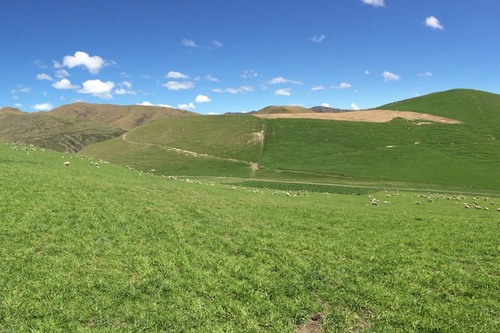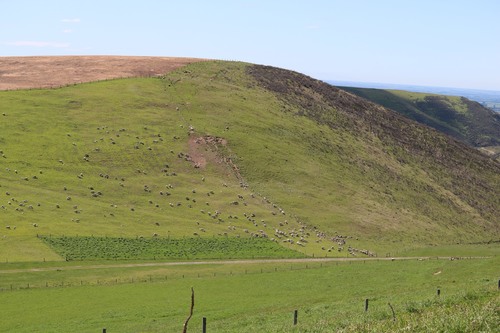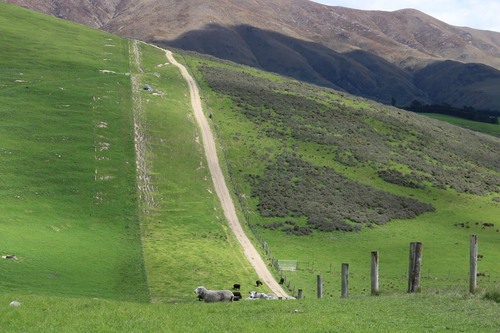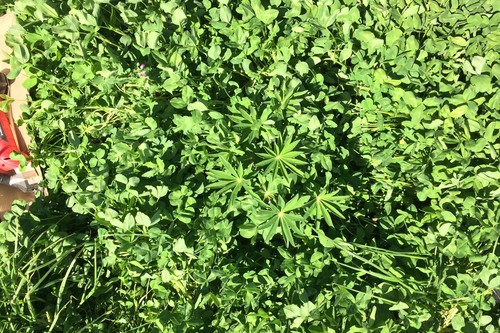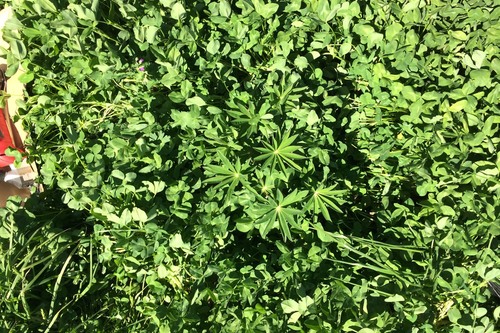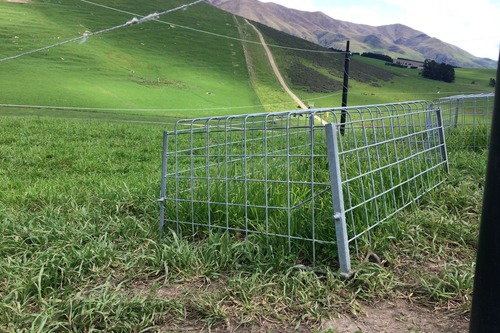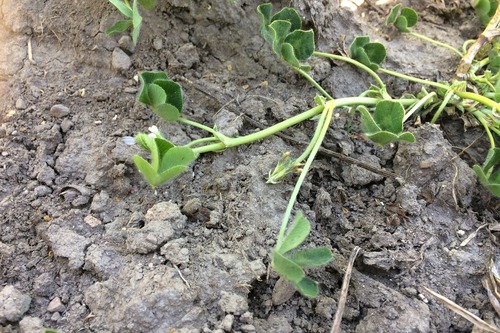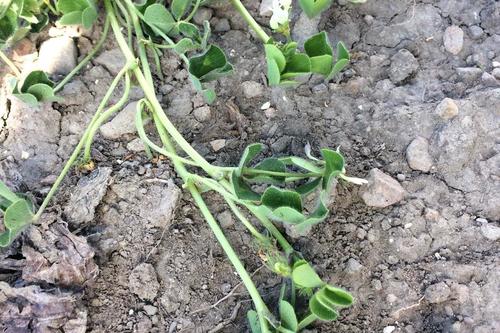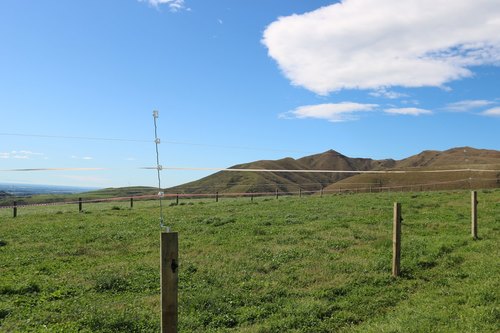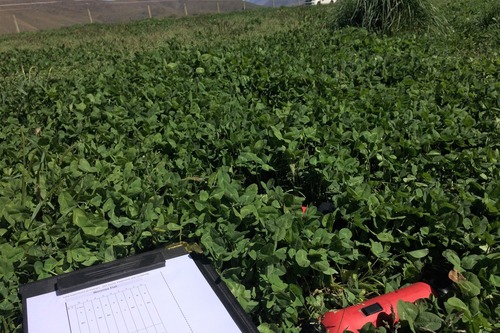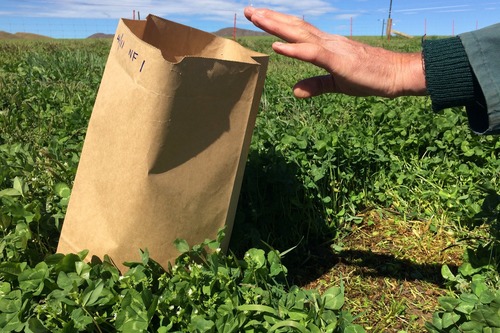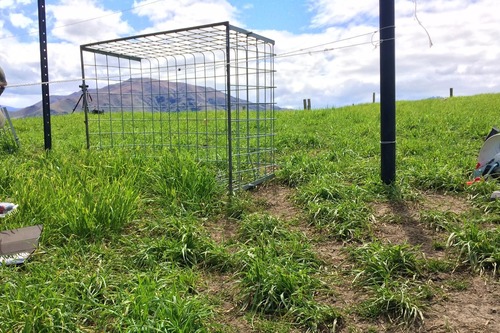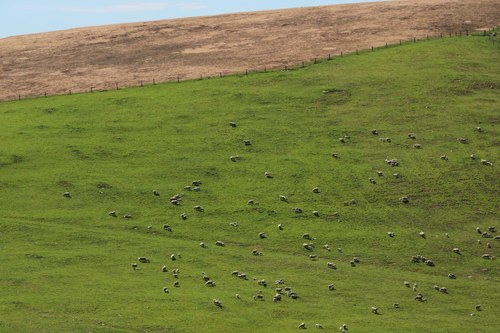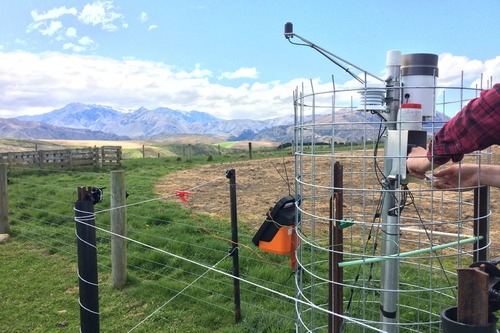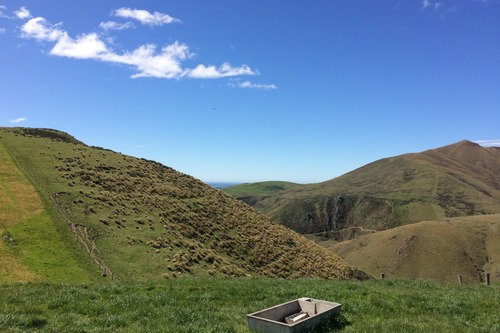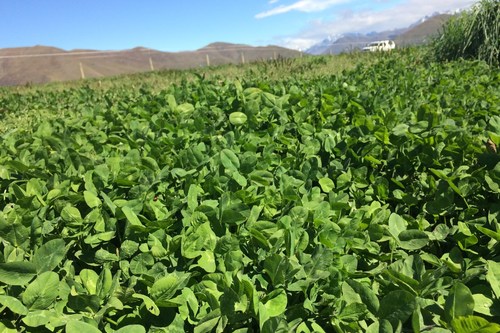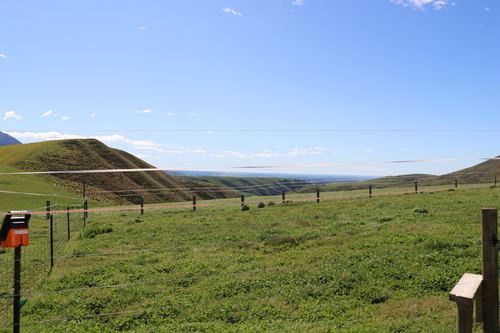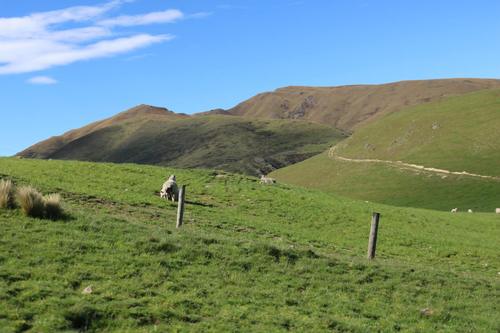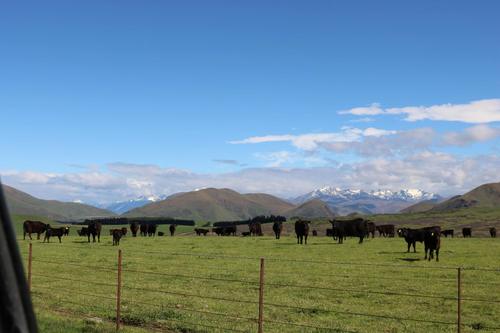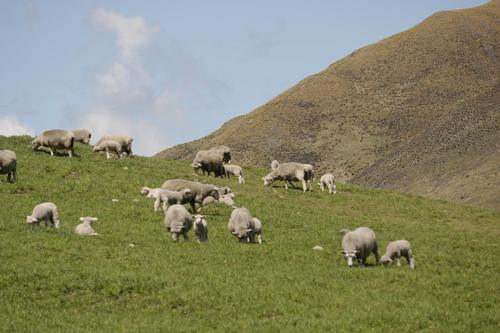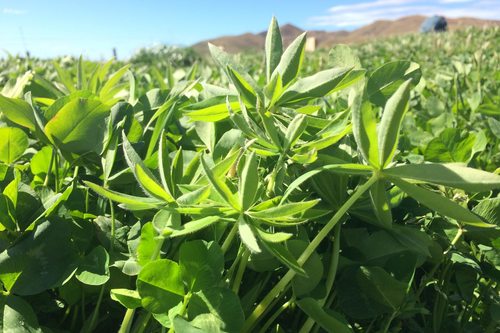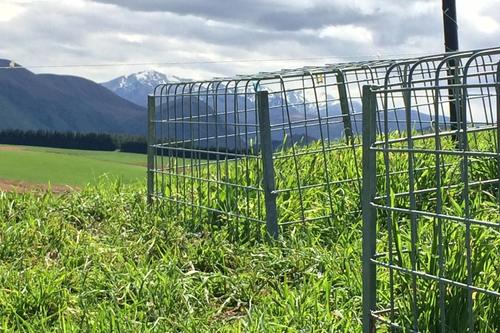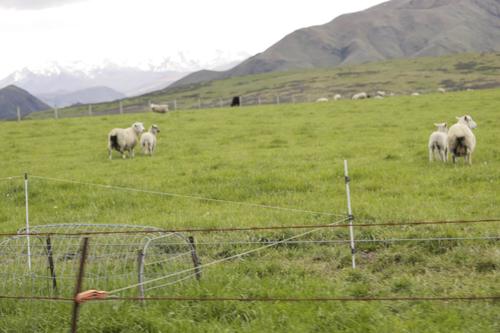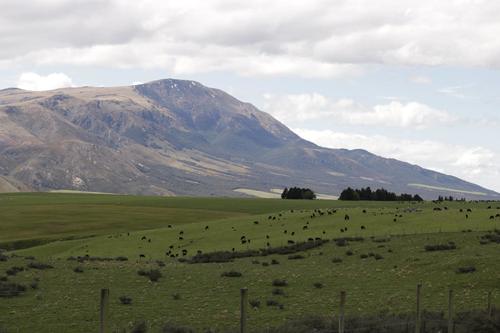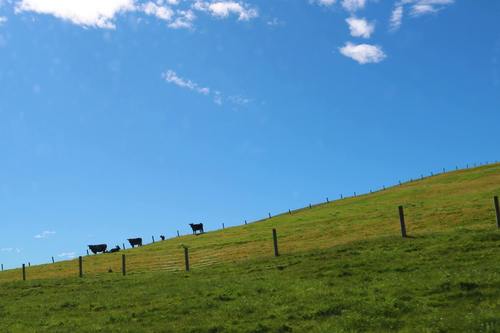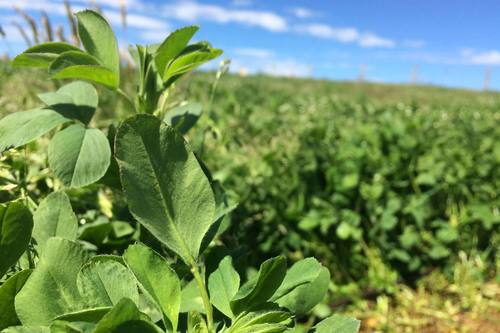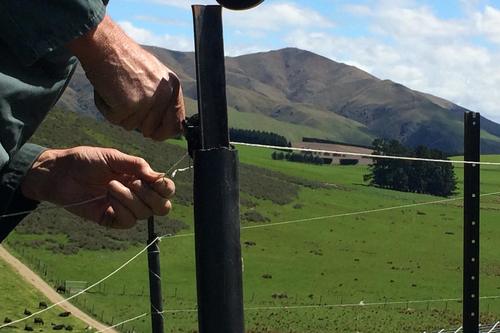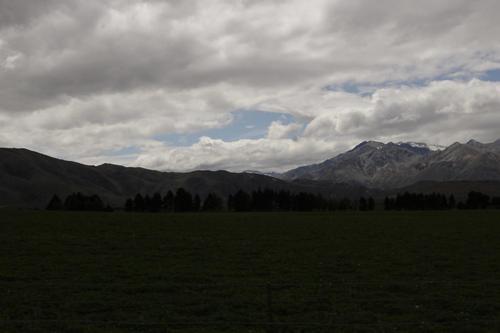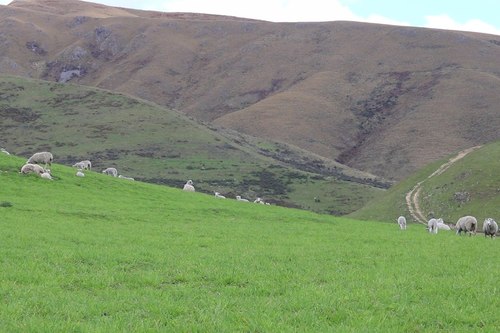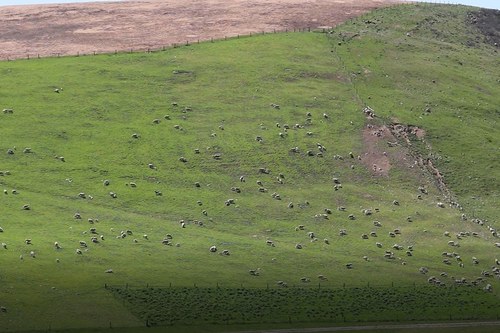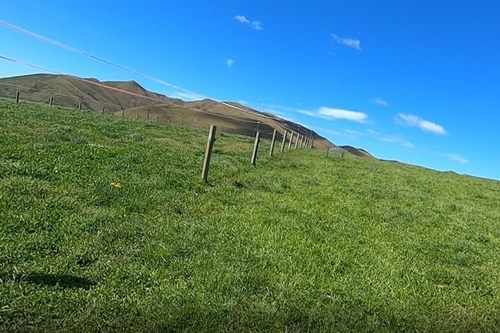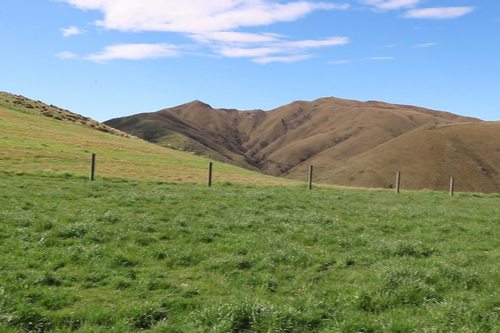About the study site
Inverary Station, in mid-Canterbury, is a 4,250 ha sheep and beef hill country farm. Inverary has about 3000 ha of the harder hill country with limited useful grazing and 650 ha of easier hill country with better soils that is suitable for grazing. The rest of Inverary is largely rolling or flat country with good cultivatable soils capable of growing large quantities of high-quality dry matter.
Forage trials and soil monitoring were undertaken at Inverary Station.
Forage trials
What was achieved
- Increased understanding of the impact of sub surface lime application (lime injection) on soil pH and growth rates of legume-based pastures at Inverary station.
- Increased understanding of production differences between red clover (improved pasture) and unimproved pasture in this hill country environment.
- Increased understanding of difference in climate and soil properties in complex (aspect and altitude) hilly landscapes typical of summer moist (900-1000 mm) hill country farms.
Listen to John Chapman talk about his journey to legume dominant pastures at Inverary Station
Study 1
What was trialled
- This study aimed to establish if sub surface lime application (lime injection) had a positive impact on soil pH and growth rates of legume-based pastures at Inverary Station.
- A lime ripper was used to place pelletised, fine lime at two depths (100 mm and 350 mm) at rates of 0, 1 or 2 t/ha.
- The dry matter production of the two pastures was monitored over three growing seasons to gauge response and economic viability of lime injection for hill country farmers.
Key findings
- Lime injection at 1 or 2 t/ha rates did not give a consistent yield benefit after three years, and the dry matter yields with no lime were satisfactory.
- There were significant differences between sites, legume species and lime rates at different harvests over time.
- Because the summer rainfall was adequate in both years, the tap-rooted lucerne and red clover did not have an advantage over the volunteer shallow-rooted white clover. Red clover was moderately well adapted to the topsoil conditions.
- The lime blower can be used to modify sub surface pH but the technology requires further development to be used commercially.
Study 2
What was trialled
- Regular quadrat cuts from exclosure cages on different pasture types across the farm were taken between August 2019 and January 2020 to determine the differences in production between lucerne, improved pasture and unimproved pasture in this hill country environment.
Key findings
- Over four growth seasons, improved pastures produced 2-3 times more DM than resident pastures. This was a result of increased growth rates, particularly during periods of increased animal demand.
- A lot of resident pasture was not eaten and decayed in the wet conditions which restricted new pasture growth.
- The addition of Phosphorous + Sulphur fertiliser added to the late spring surplus but accentuated the late spring problem of excess feed going to seed.
- Red clover was successfully introduced by aerial no-til as a monoculture. This enabled chemical control of weed grasses such as red fescue.
- Red clover grew a month earlier than the resident browntop which met the requirement for early spring lactation feed.
- Red clover was followed by Italian ryegrass to use the soil nitrogen and this combination produced over 30 t DM/ha.
- Satellite areas of high-quality feed substantially changed the feed supply, which enabled greater control of grazing management which subsequently increased pasture quality across the rest of the farm.
- The pasture growth rate data gave the farm manager confidence to renew pastures and understand feed supply in relation to aspect and altitude.
Study 3
What was trialled
- On-farm climate data from different altitudes and aspects were compared to estimates generated by NIWA’s Virtual Climate Station Network (VCSN) at the two closest sites.
- Environmental data were monitored at three locations.
- Two of these sites logged 10 cm soil temperature hourly while the weather station recorded 10 cm soil temperatures, air temperature, rainfall and solar radiation.
Key findings
- Solar radiation and air temperature estimates from VCSN data were reliable and consistent with onsite data.
- Rainfall data from VCSN and farm data was very similar (less accurate at rainfall <40mml/month or during extreme rainfall events).
- Soil temperature estimates from VCSN data underestimated soil temperatures on the north facing slope by ~1 °C but was reliable on the south facing slopes.
- The contrast between climatic data from Willesden and Inverary sites suggested temperature measurements are more reliable from VCSN in summer moist areas.
Keen to know more?
- Chapman et al 2021: Legumes are the key to increasing productivity at ‘Inverary’, a summer moist hill/high country farm in mid-Canterbury.
- Smith et al. 2022: Total annual and seasonal DM production of improved and unimproved resident pastures at three farms in Canterbury
Soil monitoring
What was achieved
- A wireless sensor network was established that enabled some of the first daily farm scale mapping of soil properties in NZ hill country. These maps can be used to drive forage yield models and help inform decision-making on pasture management.
What was trialled
- The trial investigated the potential for modelling the distribution of soil temperature and moisture in hill country landscapes at high spatial and temporal resolution.
- A WSN was installed at Inverary Station in July 2020. The WSN consisted of twenty sensors installed in the soil at 30 cm depth. The sensors were distributed across the farm in a way that accounted for topographic variation in elevation, aspect (the direction a hillslope faces) and the potential for water to accumulate (strongly influenced by slope gradient).
- The sensors were configured to measure soil temperature and soil moisture at hourly intervals and report measurements back to a cloud database via the cellular network. On the farm, LoRa technology was used to communicate between components of the WSN.
- Statistical models were fit to the soil temperature and moisture data in order to relate those soil properties to other topographic variables including elevation, aspect and slope.
- The models were used to predict soil temperature and moisture across the farm at 30 m resolution at daily intervals across a generic model year.
Key findings
- The WSN performed well.
- As expected, sensor data revealed that north-facing slopes tended to be warmer and drier than south-facing slopes, which reflects the influence of topography. Interestingly, soils on north-facing slopes warmed from the winter minimum temperature through an arbitrary threshold of 10°C about 42 days faster than soils on south-facing slopes (about 102 days versus 144 days in 2020).
- The soil temperature model performed very well, but the soil moisture model performed relatively poorly. The difference in performance is due in part to differences in predictability between soil temperature and soil moisture, the former varying more smoothly and more regularly over time than the latter.
- Soil moisture predictions derived from the model should be interpreted with caution, but should be good enough to provide a broad indication of when soils are near field capacity versus when they are near wilting point.
- It is expected that model performance should improve with a longer time-series of data, and better sensor calibration.
Photos of Inverary
